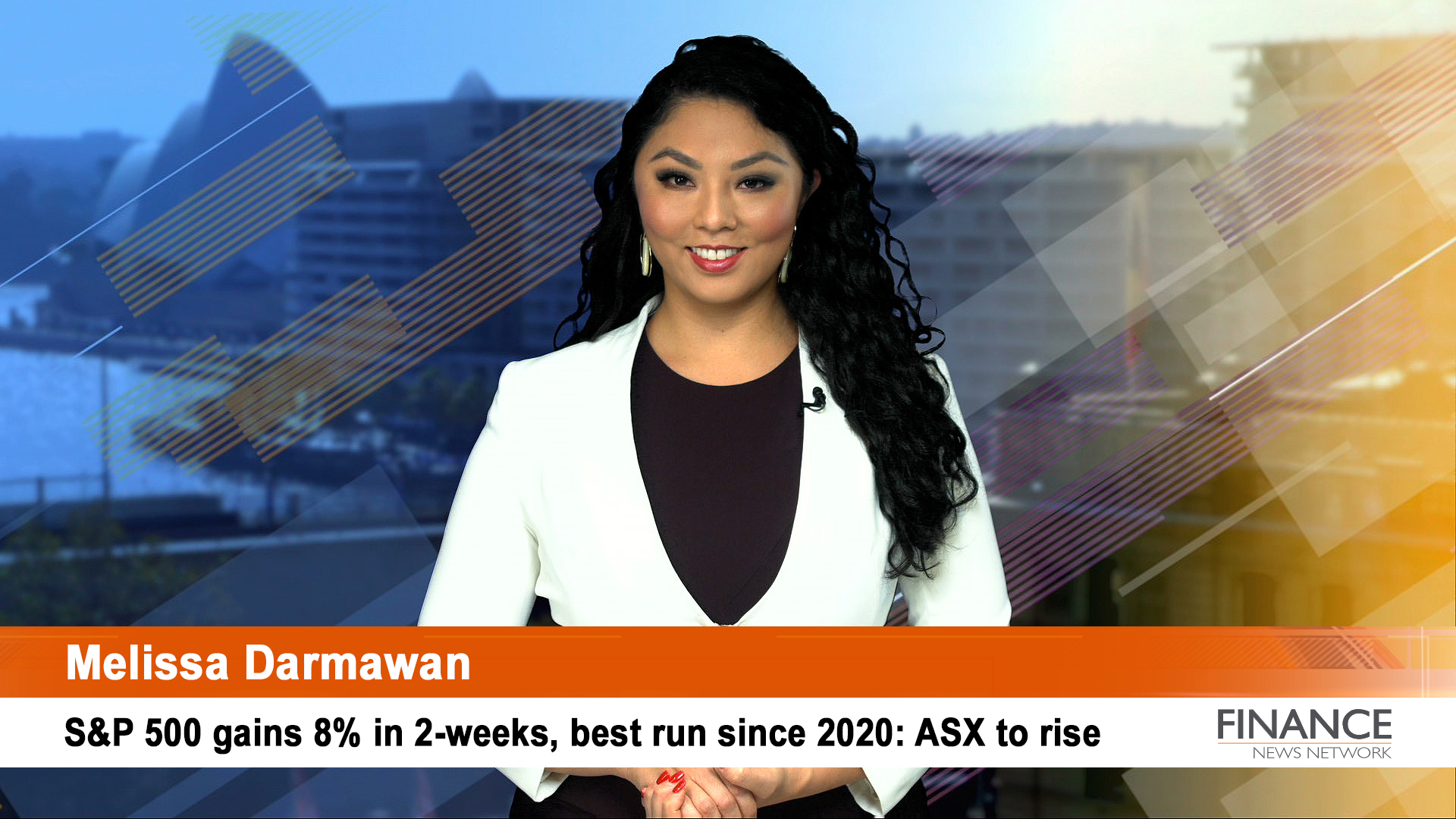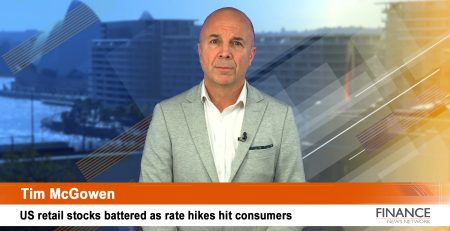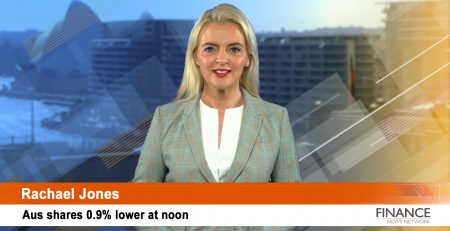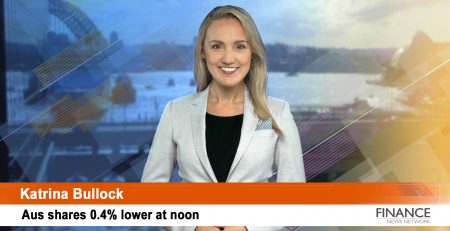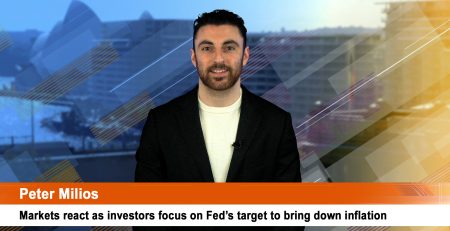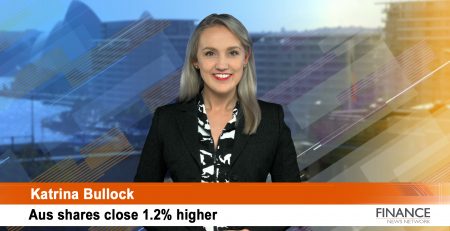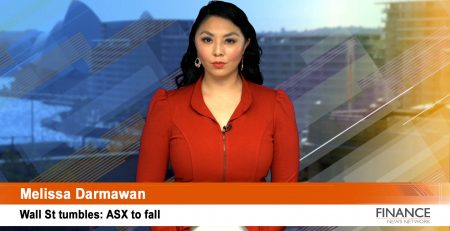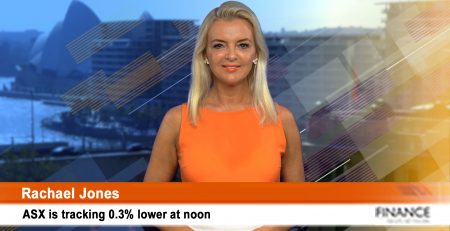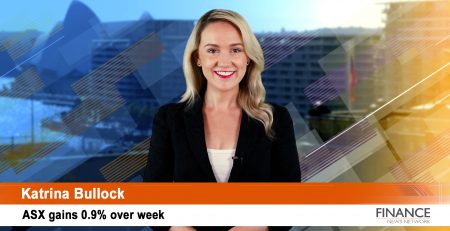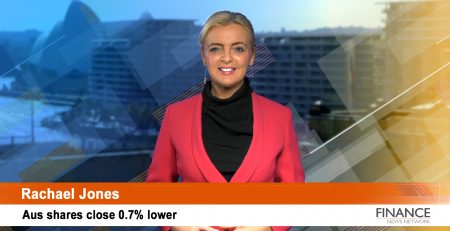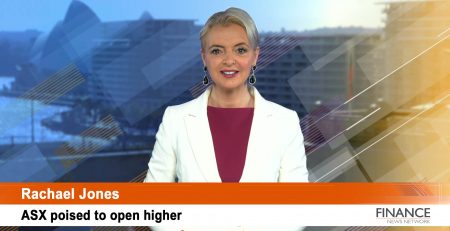S&P 500 gains 8% in 2-weeks, best run since 2020, Rio, FMG, Macquarie, Scentre on watch: ASX to rise
Global markets closed mixed on Friday, rising US treasury bond yields boosted financials though hurt growth stocks while rising commodity prices limited losses. An attack at Saudi Arabia’s oil company Aramco in Jeddah sent oil prices higher. ASX closed higher for the 2nd week in a row. Explanation of an inverted yield curve and last week's bond movement. Review of what’s ahead for the week and stocks to watch today.
Good morning. I’m Melissa Darmawan for Finance News. This is your market outlook.
The Australian sharemarket is set to rise as rally-mode looks to continue.
Late afternoon rally push stocks almost higher
US stocks rose for its second straight week, closing Friday on a mixed note. Dip buyers emerged late afternoon to pull the Nasdaq off its lows though not enough to close higher.
Investors focused on the likely headwinds around the uncertainty of the war in Ukraine and the Fed’s hawkish plan towards raising interest rates or borrowing costs to fight inflation.
EU inks deal with USA to help wean off Russian gas
In an effort to give aid, the European Union has struck a deal with the US as it aims to cut its reliance on Russian energy imports. As part of the arrangement, the US said it will look to provide at least 15 billion cubic metres more of liquefied natural gas to Europe this year.
President Biden said that while the initiative could lead to higher costs, he said that “it’s not only the right thing to do from a moral standpoint, it’s going to put us on a much stronger strategic footing”.
Saudi attack reignites 2019 global oil angst
Elsewhere, Saudi Arabia’s Yemen's Houthi group, claimed that they attacked a Saudi Aramco site with missiles, causing a fire in two storage tanks but no casualties were reported. This caused crude prices to rise by 1.4 per cent after we saw the price cool in the prior days. This is the second attack in the past week, triggering concerns of the 2019 attack that disrupted around half of Saudi Arabia’s production, and 6 per cent of global oil production.
US tech giants’ new rules to curb big power play
In other news, the European Union reached a deal on landmark digital rules to prevent major tech giants from abusing their market position to push out the efforts of smaller rivals. “Gatekeepers” like Google and Facebook’s parent company, Meta, Amazon, and Apple are set to face penalties if they break the rules. Potential fines include a penalty of up to 10 per cent of their global revenues and 20 per cent for repeat offenders. This could be in the billions for these silicon valley based companies.
Consumer confidence for March came in below economists’ expectations, according to a University of Michigan. The index has been on the decline in recent months as consumers, with low-income households feeling the squeeze initially but now higher income families are too.
Bonds
Meanwhile, as dip buyers helped the equity rally, a surge in bond yields took the shine off the stock market. This saw weakness in growth names like tech and a lift in banks. Higher yields help a bank’s margin as borrowing rates rise.
As investors throw darts on how many rate hikes to expect, yields on the short and medium term treasuries, like the 2-year which tend to be responsive to Fed policy, were higher than the longer term bonds like the 10-year. Yes, equities rose last week but a lot of the action was in the bond market. Why?
What is an inverted yield curve?
When the short term yield is higher than the long term yield, you will hear analysts call it an inverted yield curve. The yield curve shows the interest rate of a variety of bond maturities. This is closely watched as it usually indicates a recession ahead.
The graph here you’re seeing shows you the 2-year which is the red line and the 10-year which is the blue line. The blue line is showing how the 10-year yield is flattening, while the 2-year yield is steepening as indicated by the arrows. The grey vertical columns you can see shows the period when there was a recession, as technically defined by the NBER which is the National Bureau of Economic Research
Therefore, an inverted yield curve would look like this versus a normal yield curve like this versus a steep yield curve versus a flat yield curve.
Behind the curve?
You will also hear the term, the Fed is “behind the curve” and that means the US central bank has not raised rates to keep up with inflation. You may also hear that inflation has run-away. To put things in context, the Fed’s annual inflation target is 2 per cent, right now it’s at 8 per cent, therefore, we are seeing runaway inflation by four times to the Fed’s target. When you compare this locally, we are in a different position. The RBA’s target inflation rate is 2 to 3 per cent, currently we are at 3.5 per cent annually, hopefully you can see the contrast.
If you recall late December last year, early January this year, after the Fed released its meeting minutes, the bond market reacted to the hawkish tone. Then we saw equities react and we saw a sell-off.
What are equities & bonds telling us right now?
It appears that the bond market is telling us a lot about what the Fed can and can't do. With the short term yield higher than the long term, the bond market appears to be more pessimistic about the economy than the stock market seems to be.
It looks like the central bank gave what the market wanted to hear and amid this tightening cycle, stocks are not far off from record highs. For some market participants, this scenario is making them feel troubled.
Though, as we talked about last week, when there is a smell of a slowdown, investors look to areas of growth. When we look at history, tech shares outperformed, followed by real estate, energy, health care, and utilities in times when interest rates were rising.
With the growing uncertainties, markets have been volatile.
Fuel to food
While with the oil market, it looks like the disruption angst is going to linger on renewed concerns, which bodes well for prices to rally. Then we have the war in Ukraine, things are going to get more expensive, from fuel to food.
It’s the price we are paying, to defend freedom.
Figures around the world
At the closing bell, the Dow Jones gained 0.4 per cent to 34,861, the S&P 500 added 0.5 per cent to 4,543 and the Nasdaq lost 0.2 per cent to 14,169.
The S&P 500 rose 1.8 per cent for the week, extending its gains over the past two weeks to 8.1 per cent, the strongest run since late 2020. The Nasdaq Composite rose 2 per cent, extending its two-week rise to more than 10 per cent while the Dow Jones closed 0.3 per cent higher for the week.
Across the S&P 500 sectors, it was almost a broad-based rally. Energy was the winner, up 2.3 per cent, followed by utilities, supplier of power up 1.5 per cent followed by financials up 1.3 per cent. Info tech and consumer discretionary were the only two losers, down 0.1 per cent.
Taking into account what we have discussed, the yield on the 2-year treasury note is at 2.55 per cent, while the 10-year is at 2.47 per cent against gold weakening and a stronger greenback
Across the Atlantic, European markets closed mixed. Paris closed flat, down 0.03 per cent, while Frankfurt and London’s FTSE added 0.2 per cent.
On the London Stock Exchange, Rio added 1.2 per cent, BP gained 0.6 per cent and Shell rose 1.4 per cent.
Asian markets closed mixed. Tokyo’s Nikkei added 0.1 per cent, Hong Kong’s Hang Seng dropped 2.5 per cent after earnings from Tencent, Sunny Optical and diaper maker Hengan International fell in the order of 2 to 8 per cent, while China’s Shanghai Composite fell 1.2 per cent.
ASX wrap up
On Friday, the Australian sharemarket closed 0.3 per cent higher to a 2-month high to 7,406 lifted by materials and energy stocks, while healthcare, financials, and info tech shares fell. Over the week, it closed 1.5 per cent, and it’s down 2.4 per cent for the year.
To name out a few standouts, Woodside (ASX:WPL) is on a 6-day winning streak, improving by over 8 per cent last week while BHP (ASX:BHP) is up 7 per cent.
In terms of the best and worst performing stocks on Friday, The winner was BlueScope Steel (ASX:BSL), which surged 5.1 per cent at $21.46. It was followed by shares in Brickworks (ASX:BKW), Flight Centre Travel Group (ASX:FLT), JB Hi Fi (ASX:JBH), on a 5-day winning streak after a strong trading update, and IGO (ASX:IGO).
The worst-performing stock in the S&P/ASX 200 was Telix Pharmaceuticals (ASX:TLX), closing 11.2 per cent lower at $4.21. It was followed by shares in Imugene (ASX:IMU), Novonix (ASX:NVX), PointsBet (ASX:PBH) and Clinuvel Pharmaceuticals (ASX:CUV).
From the stocks that were on watch, Atlas Arteria (ASX:ALX) recovered from its initial 2 per cent fall to close 0.9 per cent lower to $6.66 amid several broker downgrades.
Morgans downgraded its rating to a hold from an add with a price target of $6.41 while Macquarie also downgraded the Atlas Arteria (ASX:ALX) to neutral from outperform with its target price trimmed to $6.66 from $7.09 after an unfavourable exchange rate was taken into account. Additionally, French fuel prices have surged by 60 per cent from 2019 levels with car trips set to be cut by up to seven per cent.
Uniti (ASX:UWL) shares surged to 2.4 per cent to $4.7, up over 15 per cent for the week. Brookfield has joined the bidding war, teaming up with HRL Morrison to take on a Macquarie-led group who lobbied a $5 per share bid for the infrastructure-focused telco.
In earnings, fashion retail giant Premier Investments (ASX:PMV) unveiled its record interim dividend despite posting a 13 per cent fall in its net profit to $163.6 million for the 26 weeks ending 29 January this year. Its Peter Alexander brand clocked record sales in the 2022 fiscal year, buoying the performance of the conglomerate after 42,675 closed trading days due to government lockdowns. The owner of seven brands including Just Jeans, Peter Alexander, Smiggle, and Portmans recorded a revenue fall of 1.9 per cent to $770.3 million. The record dividend is up 35.3 per cent on the previous corresponding period to 46 cents per share and is set to be paid at the end of July. Shares closed 1.6 per cent lower to $28.48.
In M&A’s, Healius (ASX:HLS) has put up for sale its Adora Fertility and three co-located Healius Day Hospitals for $30.5 million. The binding deal is with Liverpool Partners for an all cash transaction with the settlement slated for the end of this financial year, subject to conditions. The move comes after the ACCC jumped in to prevent the $45 million bid by Virtus Health to acquire the business in October last year. Shares fell 1.2 per cent to $4.22.
Shareholders in Z Energy (ASX:ZEL) voted in favour of the scheme of arrangement under which 100 per cent of the shares in the company will be acquired by Ampol Holdings NZ (ASX:ALD). The resolution was passed by the requisite majorities of shareholders of 75 per cent or more of the votes cast and more than 50 per cent of the total number of Z Energy shares on issue. Shares in Z Energy (ASX:ZEL) closed at $3.48 while shares in Ampol Holdings (ASX:ALD) closed at $29.91.
Several companies have gone into a trading halt including, Sequoia Financial (ASX:SEQ), Antilles Gold (ASX:AAU), Tietto Minerals (ASX:TIE).
SPI futures
Taking all of this into the equation, the SPI futures are pointing to a 0.5 per cent gain.
What to watch out for this week
This week, $20.5 million in dividends is set to be paid. It’s the biggest week for pay-outs as per CommSec. We could see some of this come back into the market, giving support to the index while the list of companies to trade ex-dividend will reduce.
On Tuesday night, Treasurer Josh Frydenberg hands down the federal budget. This is where we find out where the government is going to spend the money and where it's funded from.
We will find out if the budget is in surplus if it taxes more than it spends or in deficit, if it spends more than it taxes. That means there would be a bond buying program to fund it, so this could play a role around inflation and the RBA’s view to combat it with this in the horizon.
It usually doesn’t move the needle for markets but if there is a certain sector spent, it could influence the ASX companies that provide those goods and services.
We have inflation and job numbers coming out at the end of the week in the US. Also, China is set to release March PMIs amid their lockdowns as a country with a Covid-zero policy.
Against the rough backdrop, OPEC+ is set to hold a virtual meeting mid this week. It’s expected that the alliance will keep current production plans in place even with crude oil prices trading at a 14-year high and the International Energy Agency’s warning on what it could mean losing Russian oil, not to mention the attack in Saudi Arabia.
Back home, the key economic news to watch are the retail sales and building approval figures from the Bureau of Statistics and Core Logic’s home value index, so a check in on property prices.
How about today?
Keep an eye out for banks, miners, and energy stocks today. Information tech could continue its losing streak.
The Aussie dollar to the greenback is close to recent highs helped by a rally in commodity prices. China’s industrial profit figures and the PMIs this week could see a weakening and could have a ripple effect on the local bourse.
In terms of stocks, keep an eye out for investment bank Macquarie Group (ASX:MQG) amid news of a US$12.7 billion deal to buy a 60 per cent stake in a UK gas unit.
Rio Tinto (ASX:RIO) is also on watch after Guinea's government, Rio plus Simandou inked a 35-year infrastructure deal, 2-weeks after the mining operations were interrupted. Also, UBS upgraded Rio Tinto’s rating to neutral from a sell with a hike in the price target to $104 from $90. The disruption of iron ore and steel exports from Ukraine and Russia, combined with stronger-than-expected data from China in Jan to Feb with the prospect of further easing to achieve the net present cost’s ambitious growth target, improves the risk versus reward for the iron ore price over the next 12 months and in turn for Rio Tinto.
Fortescue Metals (ASX:FMG) also received an upgrade to neutral from UBS on better iron ore outlook with a price target of $17.10 from $16.13.
We might see some selling in Scentre Group (ASX:SCG) amid fund manager T. Rowe set to replace it with a German real estate company.
As the dividend payout week starts, BHP shareholders are set to receive $2.08 per share fully franked interim today.
IPO
There is one company set to make its debut on the ASX today. Keep an eye out for Far East Gold (ASX:FEG) after raising $12 million at 20 cents per share.
Ex-dividend
Cochlear (ASX:COH) is paying 155 cents franked
Lycopodium (ASX:LYL) is paying 18 cents fully franked
Naos Emerging Opportunities Company (ASX:NCC) is paying 3.75 cents fully franked
Reece (ASX:REH) is paying 7.5 cents fully franked
Dividend-pay
There are seven companies set to pay eligible shareholders today.
Ariadne Australia (ASX:ARA)
BHP Group (ASX:BHP)
Dusk Group (ASX:DSK)
Endeavour Group (ASX:EDV)
IDP Education (ASX:IEL)
Nick Scali (ASX:NCK)
Universal Store Holdings (ASX:UNI)
Commodities
Iron ore has gained 3 per cent to US$150.80. Its futures point to a 3.5 per cent gain.
Gold has lost $7.90 or 0.4 per cent to US$1960 an ounce. Silver is down $0.30 or 1.2 per cent to US$25.62 an ounce.
Oil has gained $1.56 or 1.4 per cent to US$113.90 a barrel.
Currencies
One Australian Dollar at 7:40 AM has weakened from Friday, buying 75.07 US cents (Fri: 75.14 US cents), 56.97 Pence Sterling, 91.71 Yen and 68.35 Euro cents.
Copyright 2022 – Finance News Network
Source: Finance News Network

